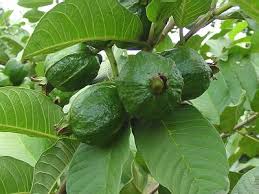skip to main |
skip to sidebar
Scientific name: Cassia alata L

is used as herbal medicine and is a shrub that grows wild in the tropical climate of Philippines. Akapulko is widely used in the Philippines as herbal medicine. The akapulko leaves contain chrysophanic acid, a fungicide that is used to treat fungal infections, like ringworms, scabies and eczema.. Akapulko leaves are also known to be sudorific, diuretic and purgative, used to treat intestinal problems including intestinal parasites. Akapulko is also used as herbal medicine to treat bronchitis and asthma. Because of Akapulko’s anti-fungal properties, it is a common ingredient in soaps, shampoos, and lotions in the Philippines. The Philippine Council for Health Research and Development (PCHRD) has helped develop the technology for a akapulko herbal medicine lotion.
Akapulko is an erect, shrubby legume with dark green compound leaves. Akapulko leaves have orange rachis that has 16-28 leaflets. Akapulko produces an axis of golden yellow flowers that has 4-winged pods containing 50-60 flattened, triangular seeds. Akapulko flowers are enclosed by yellow-orange bracts that are later shed in time.
scientific name — Psidium guajava L
 or guava is a tropical plant, which is locally known for its edible fruit. In the backyards of Filipino homes in the country, this plant is commonly seen, and grown because of its many uses as fruit and as traditional remedy to treat various ailments. As shown by many research studies, almost all of the parts of this plant have medicinal qualities and value, and thus, making it as one of the most popular therapeutic plants in the Philippines. Bayabas is a small tree that can grow up to 3 meters tall with greenish-brownish smooth bark. The round globular bayabas fruit starts as a flower and is usually harvested and eaten while still green. The fruit turns yellowish-green and soft when ripe.
or guava is a tropical plant, which is locally known for its edible fruit. In the backyards of Filipino homes in the country, this plant is commonly seen, and grown because of its many uses as fruit and as traditional remedy to treat various ailments. As shown by many research studies, almost all of the parts of this plant have medicinal qualities and value, and thus, making it as one of the most popular therapeutic plants in the Philippines. Bayabas is a small tree that can grow up to 3 meters tall with greenish-brownish smooth bark. The round globular bayabas fruit starts as a flower and is usually harvested and eaten while still green. The fruit turns yellowish-green and soft when ripe.
The bayabas fruit bark and leaves are used as herbal medicine. Its leaves decoction is recognized for its effectiveness to cure several ailments, including the treatment of uterine hemorrhage, swollenness of the legs and other parts of the body, of chronic diarrhea, and gastroenteritis, among others. The most common use of the leaves is for cleaning and disinfecting wounds by rinsing the afflicted area with a decoction of the leaves. In the same way, such leaves are being used to aid in the treatment of dysentery and the inflammation of the kidneys. The bark and leaves can be used as astringent. It can also be used as a wash for uterine and vaginal problems, and is good for ulcers. The medicinal uses of Bayabas appear infinite, as it is also a suggested natural cure for fevers, diabetes, epilepsy, worms, and spasms. The fruit, aside from being delicious, contains nutritional values with a very high concentration of vitamin A and vitamin C









